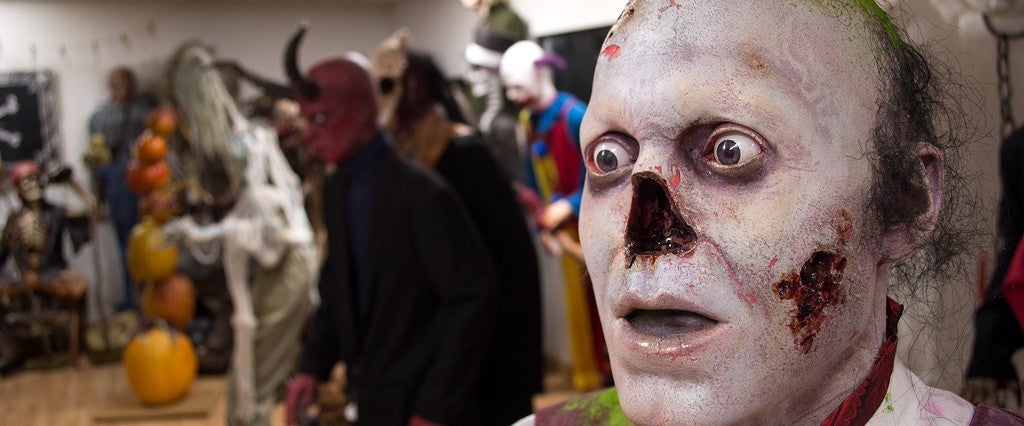In a low gray building on the side of a dusty road in Sun Valley, CA, human bodies are being sliced up, bloodied, and otherwise mutilated in unspeakable ways.
It’s high season for horror, and Dapper Cadaver, a “death-related prop house and prop fabrication shop” is churning out corpses (and, of course, parts of corpses) for haunted houses, Halloween parties, and ghoulish productions across the country. BJ Winslow started the business with his wife, Eileen, in 2006, after working in less exclusively gruesome precincts of the Hollywood prop business. If you’ve seen something formerly living on a screen in the past 10 years, there’s a good chance it was born in Dapper Cadaver’s workshop. The shop supplies movies and TV shows like Stranger Things, Law & Order, Bones, Breaking Bad, Pirates of the Caribbean (2–4), and several of the Saw movies with simulated stiffs.
And for fake dead bodies, Dapper Cadaver’s cadavers are shockingly…lifelike. Made of foam rubber and painted by the company’s flesh artists, the top-of-the-line models are all cast from a real human body, and they’re all given a name. Walking around the office, you run into piles of Franks, Jacks, Merediths, and Jessicas in various states of untimely demise. The nature of the business means that BJ has a rare window into the murderous mind of the entertainment industry, and an unusually intimate relationship with the human body. So we thought we’d ask him for some insight into how he chooses his body models, whether more men or women end up on the chopping block, and what kind of corpses are trending in 2016.


Has the demand for bodies changed at all in recent years?
The big shift has been for higher-quality bodies, with more detail and better definition. There’s also been more interaction with CGI — in Game of Thrones, for instance, we supplied heads that they then painted in chroma key blue, so they could add in the real character’s head after the fact. A life-cast head, if it’s really high quality, can cost tens of thousands of dollars, so that approach can save a lot of time and money if you’re chopping off a lot of them.
Do you sell more dead men than dead women?
The mold that we run the most is the Jack — that’s his name. But if I look at some of the numbers, and compare Jack to one of our most popular female bodies, Lucy, it looks like last year, we sold 42 units of him and 35 units of her. That’s not as big of a split as I would have thought, but the male is definitely more popular.
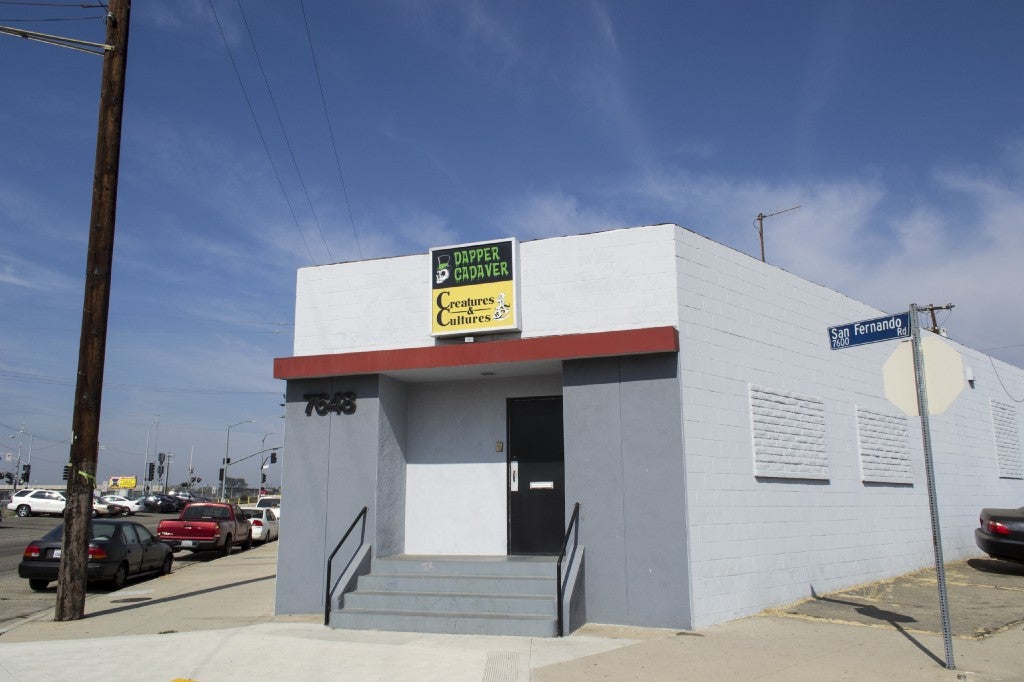
Do you ever get a commission for a variety pack, for a big death scene? How do you pick which bodies to throw in the mix?
Yeah, we often do variety packs — some of the biggest casualty scenes that we do are like war scenes, a battlefield strewn with bodies. Typically when you’re doing a war scene, your figures are fully clothed, in uniform, and so the important thing on those guys is that they have a well-modeled, poseable body and a realistic head.
So we do a lot of scenes where we do a big bulk variety of our “value figures,” which have a life-cast head on top of a poseable foam rubber body with spandex skin.
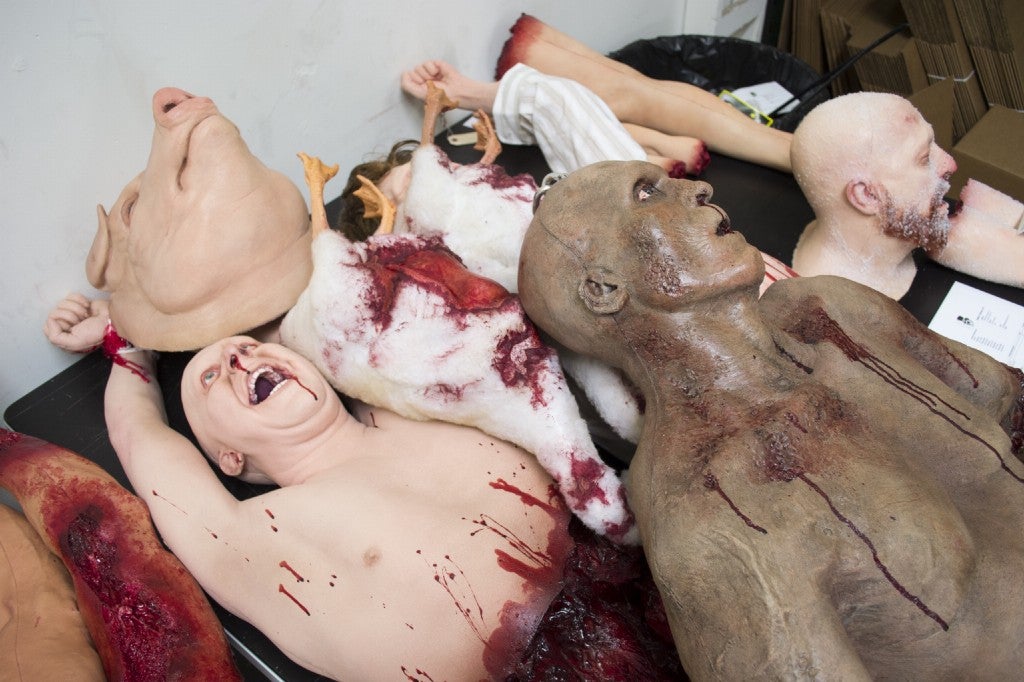
How many head options do you have in stock?
I’m a collector, you know, I’m always collecting human heads. But molds aren’t cheap to make, so when we opened, I wasn’t in a position where I could just start with 100 different heads from day one — at this point we probably have 20 or 30 varieties.
Do you have a favorite?
The Martin head is one of my favorites — that’s one of the few that’s just based on someone who walked into the store to buy something. I’m sure I was staring at him creepily, and was like, “I need a copy of your head.”
Why did you need a copy of that guy’s head?
He’s a tall guy with real robust features — strong brow, strong nose, with just an all-around robustly featured male caucasian head — and he works in the industry, so he’s done a lot of prosthetic work before. He’s played devils and cavemen and aliens and all kinds of other characters that require a lot of latex prosthetics and are great for tall, slimly, muscular men with big facial features. So he was totally game. He’s one of our more popular ones; we make zombies out of him. Scream heads, torture — you name it.
How do you pick the bodies you cast?
The Jack body was the first one we did. He’s a fairly muscular guy, and when we cast him, we thought he’d make a good soldier — like I said, we do a fair amount of war movies and things like that, so having somebody that made sense as a soldier body was a good place to start.
Then our Joe body and our Frank body — they’re tall and skinny — and then we’ve got Gordo — he was a wrestler, really big dude, big muscles, big belly, just a giant kinda guy — and we’ve got fat torsos, we’ve got some slender female bodies, some voluptuous female bodies, some older female bodies

And you said Jack is still the most popular male body. Why do you think he has such an enduring appeal?
Well Jack has a little bit of an unfair advantage — one of the things that he’s got going for him now is that he’s got about five interchangeable heads, which makes him more useful for a variety of characters.
Is there a body you wish you had in your collection, but don’t yet?
One thing that I really want to do, for men and for women, is a slightly overweight body. You don’t actually see a lot of slightly overweight people on television, but you see a lot in the world, and the world is what we’re trying to represent.
It seems like most of your bodies don’t have genitalia. Do you ever have to add the appropriate parts for a customer?
Sometimes we have needed to do something like that. For instance, we were working with a forensics school, and so they just needed a higher level of realism to work with. But it’s not usually a part of our process.

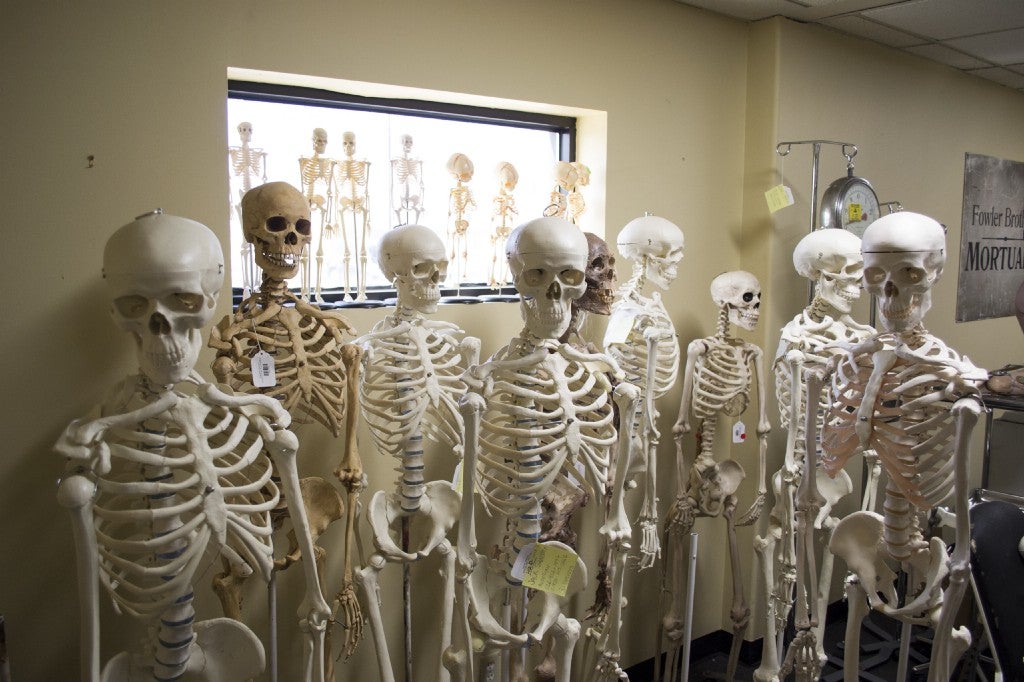
Have you tried to include a range of racial diversity in your head and body casts?
We’ve got a few African-American men, and we’ve done some folks that are Latino, and again, there is no upper limit to how much diversity you can have. Just like with the heads and the body types, we started with a narrow range and just are growing our available pieces year by year.
Is there a body type that you just can’t do, for some reason?
One of the hardest things to do with life casting is children — the head on our child body currently is a very petite and young-looking adult woman, and the body itself is sculpted. It’s a tough area, because it’s not something I think we should be doing.
Why not children?
The process itself can be stressful, and also kids, especially stage kids, they’re not necessarily making decisions for themselves, and some of the things we end up using these bodies for can be gruesome.
So with adult actors, they can be like yeah, take my body, chop it up, hang me from the ceiling, but with a kid, we can’t do that. I do want to expand the line of children’s bodies, but we’re in talks with our sculptor about the kind of thing we want to do, it’s not going to be life cast.
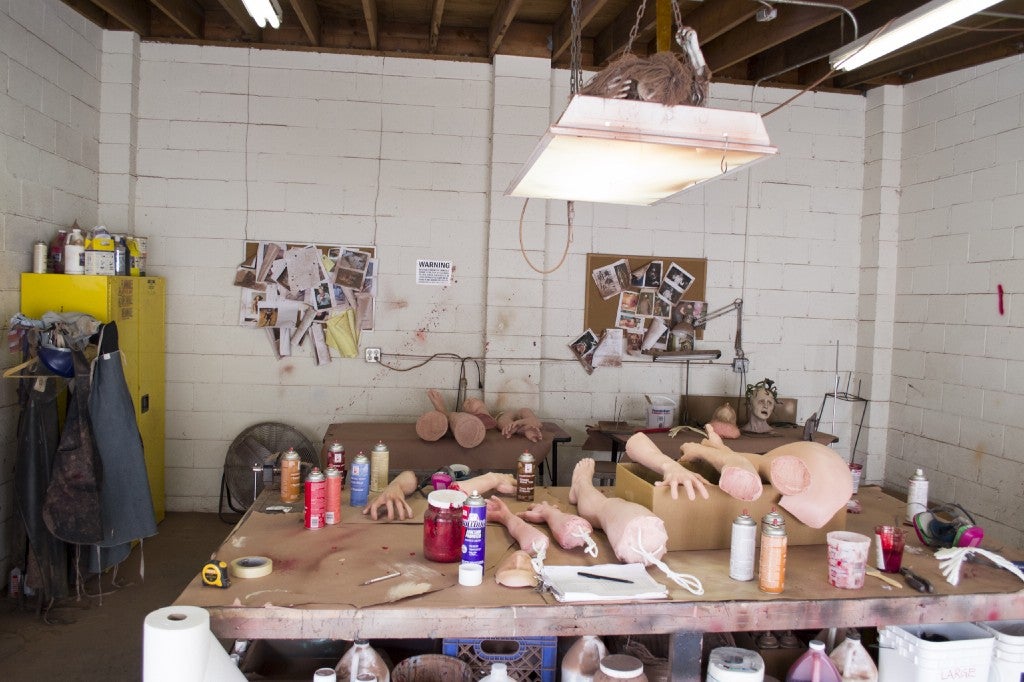
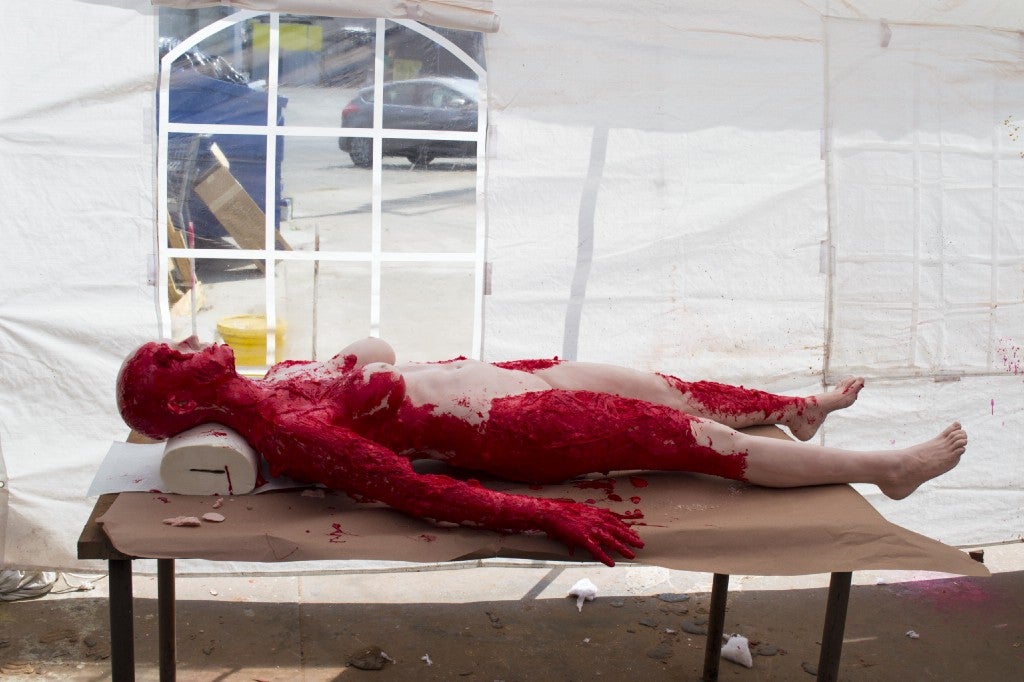
Is there one body or head that you really loved, but just didn’t take off
There was one called Faceless Fiona. We made her with the Jessica body, and she had the plastic surgery ink marks all over, like she was being chopped up by a doctor. And she was taking her own face off — she had a face skin in her hands, and the muscle and blood and meat and teeth was all showing.
I thought it was really cool, and I took it to a couple conventions, and we sold a couple. But I think one of the reasons it didn’t take off as well as I had hoped is that it’s a haunted house body, but there’s not a lot of haunted houses that are doing a plastic surgery scene. When you stick to the classics — zombies, vampires, mad science, dungeon, torture, cannibal hillbilly, all of that — then you wind up selling more.
Do you feel like you have to conform to Hollywood standards of beauty, for both the men and the women, when designing your corpses?
I’m not trying to limit our selection to faces and bodies that align with the mainstream concepts of beauty. You go to a place like a mannequin store for fashion, or some of the other places where they might be making realistic dummies, and they’re usually very narrow in their scope — it’s all slim, slightly muscular, attractive people, and they have vaguely attractive, vaguely caucasian features, and that’s not representative of our world.
I enjoy the diversity of the human body, and I enjoy the weirdness of the human body — we’re trying to represent a portion of who’s really out there. You know, a slice of life.
